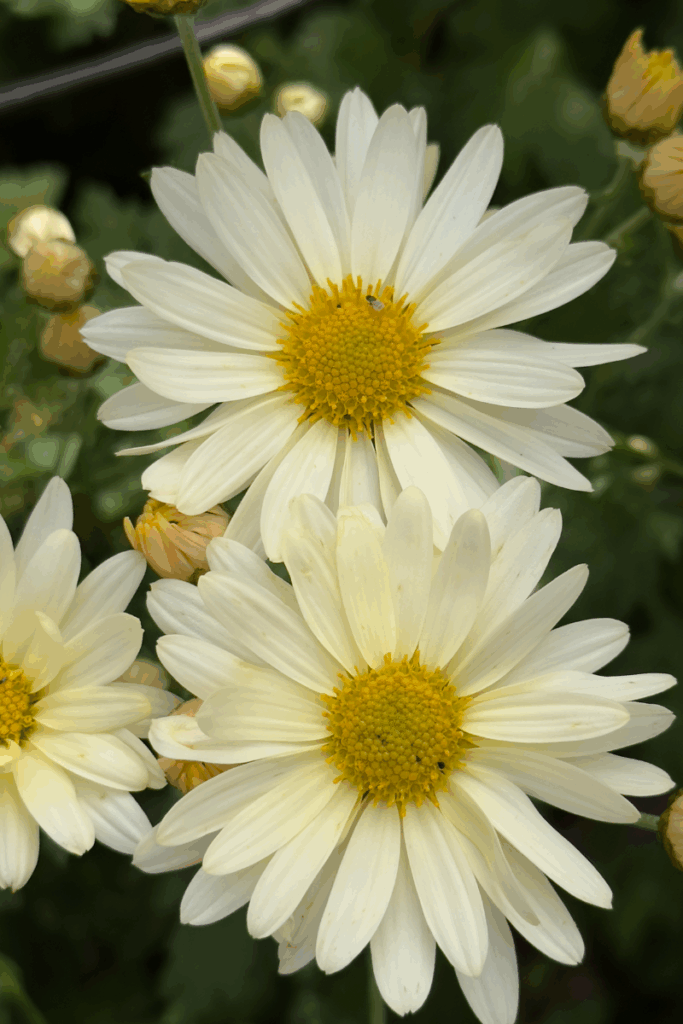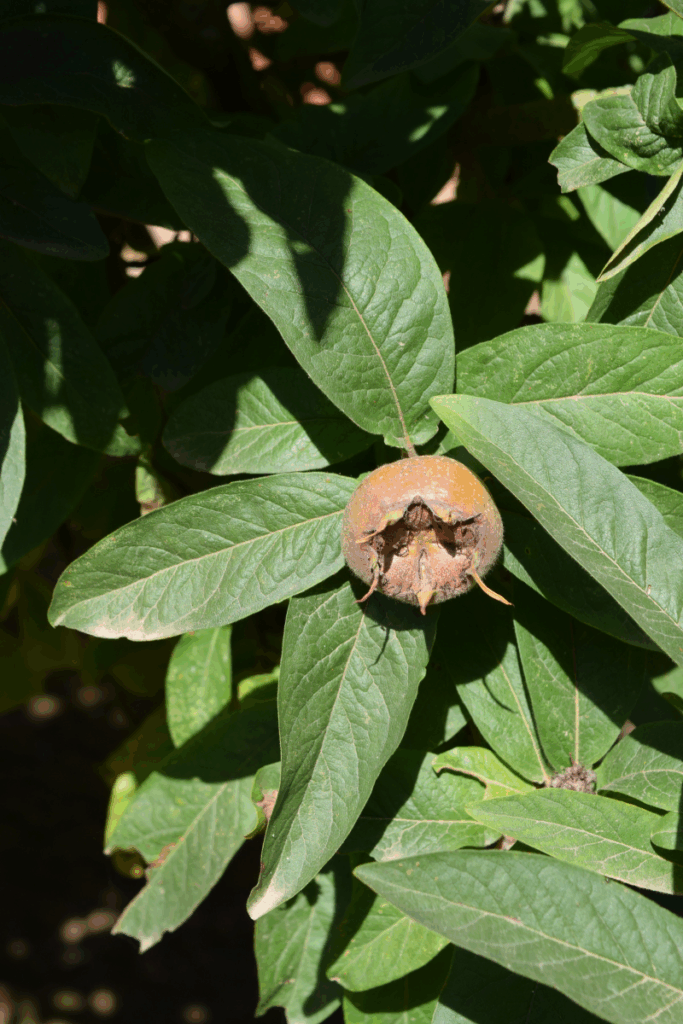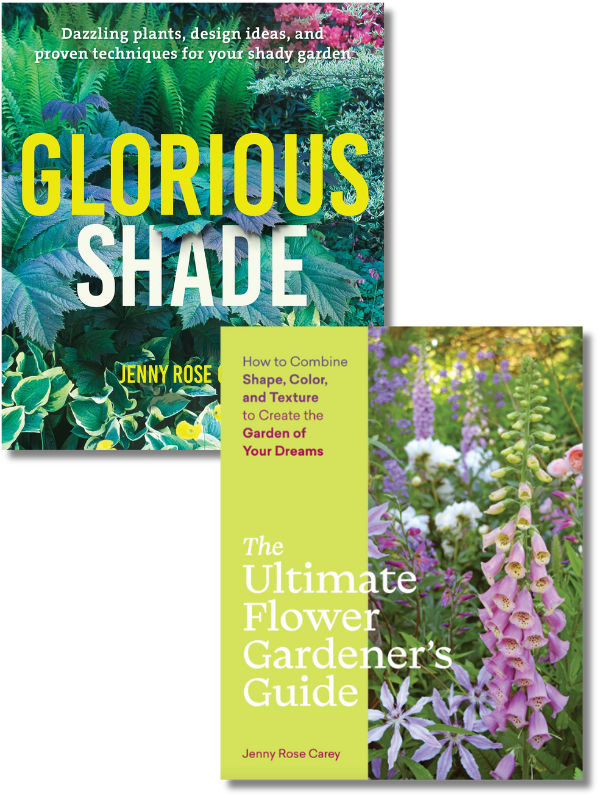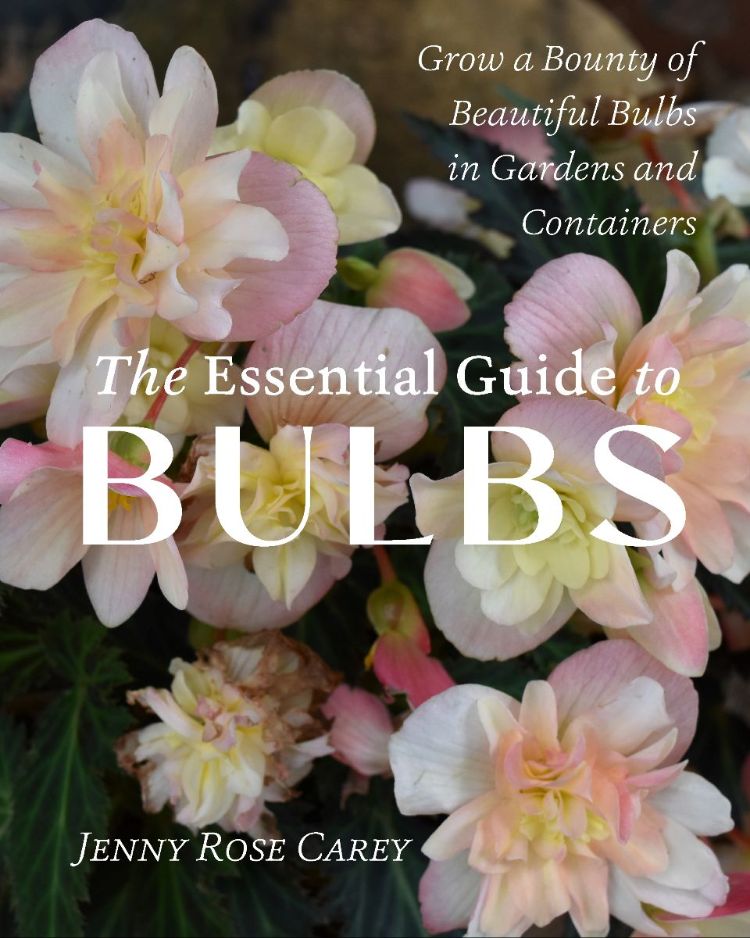The Joys of Gardening Books
Readers of this newsletter will know that I love a seasonally written book that contains chapters for each month of the year. Books like this are perfect to keep on your bedside table so that you can dip into them at the appropriate time of year. The selection of books that even include a November chapter is slim, but this month I am going back to a tried-and-true favorite–the writings of Christopher Lloyd (see below).
Short days outside mean more time for garden reading. It is a treat to huddle under some blankets and pick up a favorite gardening book. It’s also the perfect time to think over the past gardening year. Hanna, Northview’s gardener extraordinaire, and I have made a start on finding our favorite flowers this year and refining seed lists for next year.
I loved the new, light yellow, open-faced hardy chrysanthemum that we grew in the Fruit and Flowers Garden this year. The color was a good combining shade that seemed to go with everything. I also loved the way that some of the tall flowering tobaccos (Nicotiana) intermingled between dahlias and zinnias to add airiness and movement to the raised flower beds. My final pick was an unexpected love for the cosmos called “Apricot Lemonade”; they bloomed early, attracted pollinators, and made excellent cut flowers.

My new book for Timber Press – The Essential Guide to Bulbs is out. I am scheduling book tour lectures now. Please email my assistant, Helene Fantini Cooper, at jennyrosecarey@gmail.com to arrange a lecture in person or via Zoom.

A Special Online Class
If you would like to learn about garden history (including some of my favorite American gardens and English gardens, like Great Dixter), I will be teaching a Longwood Gardens course called “Introduction to the History of Landscape Design” this November and December. It is an online course and the link is below. You can take the course from home, wherever you live. I believe that it is recorded for participants, so even if the time and dates do not work, you can watch later – check before registering.
Ask Jenny Rose
Christa from Maine emailed me to ask if I could share a few more of my staking tips. She said that she used lots of branches tucked around perennials in order to keep them upright because tying them is too time consuming.
Christa, I agree. Tying things up can be time consuming. Here at Northview, we love using natural twigs as supports. The basic principles that we follow are:
- Staking can be visible as long as it is decorative
- The amount of staking should be in proportion to the size of the plant that it is holding up.
If you follow these rules, it is hard to go wrong.

In early spring, start collecting flexible slender twigs from tree prunings. Apple, crabapple, hazel, witch hazel, and birch are good. The twigs are best used fresh, so that they will bend and twist without breaking. The diameter of the staking sticks should be about pencil-width for the parts that you are weaving and winding.
Assess the plants that you want to support by how tall they get by autumn (look at them now for staking next spring). If you are keeping a whole swath of plants up, you can make a decorative mini-fence along the edges of the clump.
If you have very bushy and full perennials, then you can create what looks like an upside-down basket that the leaves grow through. Insert an odd number (usually 5-7) of twigs in a circle around the emerging clump of perennials in spring. Use slender twigs to weave in and out through the uprights. If desired, the tops of the uprights can be snapped down to cover the top of the plant–and these can be woven and twisted together to make the grow-through structure.

Staking is an art and a science. You can make the structures as simple or elaborate as you like. There is definitely a skill in finding the right balance to hold up the plant, and yet, not detract from its natural growing beauty. I hope this helps. Please send me photos next year.
Please feel free to send me a photo and ask a question to be included in a future email newsletter. I will just use your first name and state or country. Keep those questions coming.
Speaking of questions – I’ve been doing a garden segment on our local NPR radio station, 90.9 FM, in the Philadelphia area – Or streaming on the WHYY website each Thursday at about 4:44pm with Matt Guilhem. The email address for questions answered on the radio is garden@WHYY.org
November Blog Post: Great Dixter Garden

My blog this month is Part 4 of the English Garden series that I have been writing. Very appropriately, since we are featuring the writings of Christopher Lloyd – it is his garden, Great Dixter, East Sussex, England.
Plant of the Month:
Mespilus germanica
The plant of the month is the Medlar tree. It is a small tree or large shrub that is found naturally around the Black Sea from Turkey to Iran. Medlars have been grown in gardens for centuries because the fruit has been used for both food and medicine. Today, they are widely grown throughout Europe and England. They may have been one of the host of plants that traveled long distances with Roman soldiers. They were favored in Medieval gardens, and their widespread use continued until Victorian times. Medlars are rarely seen in American gardens today but were present with the early settlers in 1702 in the part of Philadelphia called Germantown.

Medlars have green elongated leaves. The medlar is related to apples, and you can see that in the shape of the fruit. The white, five-petalled, spring flowers also look like large apple blossoms.
The reason that I have chosen the medlar as my plant of the month in November is due to the fact that the fruit is as hard as a rock until this time of year. The old wisdom was that the fruit was only fit for eating after the first frost. This process of waiting until freezing temperatures to soften the fruit is called “bletting” (a very good New York Times crossword clue).
Opinions differ about the tastiness of the fruit, but years ago, when there was not much food to eat in November, I expect that it was relished. Christopher Lloyd did not think much of it. In his inimitable way, he wrote, “I tried making medlar jelly once, but it was a disaster, from which I have yet to recover.”
However, Lloyd loved the medlar as a garden plant, especially in November. He said, “The medlar outside the back gate is a fine sight, its leaves’ coloring so warmly that I always want to rush out with my camera to record this brief and magic moment.” What a lovely way of putting his appreciation for the medlar.
How special to have a series of wonderful plants in your garden that provide you with a continuum of ‘brief and magic’ moments! That is my plan for the coming year, and I will happily share mine with you. Please send me yours – maybe that can be a theme for next year’s writing.
Book of the Month:
The Year at Great Dixter

The Year at Great Dixter is a slender book about a personal garden. Divided neatly by months, Christopher Lloyd muses on the same patch of land where he grew up, and gardened until he died in 2006. This gives him an intimate connection to each plant and the tales of its planting.
An example of knowing the tales of his garden: “A taller narcissus in this front meadow, with small cupped yellow flowers, was given to us by a Swiss governess of mine.” I can’t even remember where I bought my daffodils last year!
He goes on to explain why he is writing the book. “The reason I want to write this book about the garden is because Dixter is a happy, if impermanent, microcosm.” He is writing to describe that moment in time when he was sixty-five.
Lloyd was always a pithy and opinionated garden writer. He was well-respected, so that even if people disagreed with his opinion about a plant or garden style, it was just considered an ongoing part of the gardening banter. He is sharing what he has learned by living his life in one garden. What a treat to read it all these years later.
If you want some good winter reading, put one or two of Christopher Lloyd’s books on the top of your list. They are rooted in the Sussex countryside with a soil type and climate that may not be the same as yours, but how much fun to read his prose and relish in his descriptions! He was a supreme observer and a chooser of words that suited his exact purpose. His paragraphs are a welcome break from the sanitized AI version of “facts” that we must not get used to as “good” writing.
Returning to the medlar for a moment. What AI model would come up with this phrase about his medlar jelly opinion: “We shouldn’t really grumble at a fruit for being useless.” How I wish that I had written that sentence! It is brilliant and thought provoking. That is what I crave more and more in garden writing. I want the writer’s inner thoughts to come shining through. I want their foibles and quibbles fully exposed to the world. I want full-on garden writing and lots more of it.
This book is available to read for free on the Internet Archive below!
Special Announcement: Northview Garden Days Are Chosen
Dates for the 2026 Northview garden days are as follows:
- April 24, 2026
- June 5, 2026
- September 18, 2026
There is a $20 entry date for each garden day, but anyone who wants to come to all three can attend for $40 total! All payments are through Venmo. RVSP to jennyrosecarey@gmail.com with questions and to receive directions to Northview.
In Case You Were Gardening…
My New Book – October 10, 2025
Notes from English Country Gardens – September 15, 2025
A Quartet of Flower Histories for Winter Reading – January 7, 2025
If you like this newsletter, please tell your gardening friends about it. It is easy to subscribe by contacting me via my website.
If you would like to see photos of my garden at Northview and images of my garden travels, please follow me on Instagram @NorthviewGarden and @JennyRoseCarey
Make sure to get outside whatever the weather (despite the short days).
Cheers,

PS: If you want to hear more of my thoughts and support me in what I do, check out my books. Glorious Shade celebrates the benefits of shade and shows you how to make the most of it. This information-rich, hardworking guide is packed with everything you need to successfully garden in the shadiest corners of a yard. The Ultimate Flower Gardener’s Guide gives home gardeners the confidence they need to create the flower-filled garden of their dreams. Instead of concentrating primarily on color, it brings flower shape and texture to the fore, helping homeowners make plant choices that come together in an aesthetically pleasing way.

An absolute must-read for any gardener who wants to grow bulbs in the garden or containers, The Essential Guide to Bulbs is a gorgeously photographed, comprehensive, and inviting resource that is destined to be a gardening classic. While many gardeners may be familiar with the early show of spring bulbs, like daffodils and tulips or the late show of gladiolus, there are so many more to choose from that provide three-season color, drama, and spontaneity in the garden. Learn about them all here!!





Leave a Reply